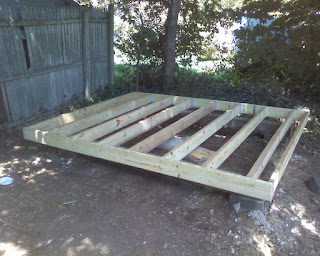When it comes to constructing a shed, one of the most critical aspects to consider is the foundation. A solid and properly built foundation is crucial for ensuring the stability, durability, and longevity of your shed. In this article, we will discuss the importance of a solid foundation for your 8x10 lean-to shed and provide some essential tips and guidelines for building a sturdy foundation.
Why is a Solid Foundation Important?
The foundation is the base on which the entire structure of your shed rests. It serves to distribute the weight of the shed evenly and transfer it to the ground, providing stability and preventing settling or sinking of the shed. A solid foundation also helps to protect the shed from moisture, insects, and other potential damages.
Without a proper foundation, a shed can become unstable and susceptible to various issues, such as shifting, leaning, or sagging, which can lead to structural damage and compromise the integrity of the shed. A weak or improperly built foundation can also cause problems with doors, windows, and other shed components, leading to difficulty in operation and reduced functionality.
Choosing the Right Foundation Type
There are several different types of foundations to choose from when building a shed, and the right choice will depend on factors such as the local building codes, site conditions, budget, and personal preferences. Here are some common foundation types for an 8x10 lean-to shed:
1. Concrete Slab:
A concrete slab foundation is a popular choice for sheds due to its durability, stability, and low maintenance requirements. It involves pouring a level slab of concrete directly onto the ground and allowing it to cure. The shed is then built on top of the cured slab, which provides a stable and level surface for the shed to rest on. A concrete slab foundation is suitable for areas with stable soil conditions and provides a solid base for heavy sheds or sheds that will be used for heavy equipment or vehicles.
2. Gravel Pad:
A gravel pad foundation is a cost-effective and relatively simple option for sheds. It involves leveling the ground and placing a layer of gravel or crushed stone on top. The shed is then built on top of the gravel pad. Gravel pads provide good drainage and stability, making them suitable for areas with good soil drainage and stable ground conditions. However, they may not be ideal for areas with poor soil drainage or high water table levels.
3. Concrete Pier Foundation:
A concrete pier foundation, also known as a post foundation or pier-and-beam foundation, involves pouring concrete footings or piers at specific points along the perimeter of the shed, and supporting the shed on these piers with beams. This type of foundation is suitable for areas with uneven or sloping ground, as it allows for adjustments to be made to level the shed. Concrete pier foundations provide good stability and durability, but may require more labor and materials compared to other foundation types.
Building the Foundation
Once you have chosen the appropriate foundation type for your 8x10 lean-to shed, it's important to follow proper construction techniques to ensure a solid and stable foundation. Here are some general guidelines to consider:
1. Site Preparation:
Prepare the site by clearing away any debris, vegetation, or obstacles. Level the ground to ensure a flat and stable surface for the foundation. Remove any rocks, roots, or other objects that may interfere with the construction of the foundation.
2. Layout and Marking:
Using a measuring tape and stakes, mark out the dimensions of your 8x10 shed on the prepared site. Make sure the corners are square and the layout is accurate, as this will determine the overall alignment and levelness of the shed.
3. Construction of the Foundation:
Follow the specific construction techniques for the chosen foundation type. For a concrete slab foundation, excavate the site to the required depth, install formwork to contain the concrete, pour and level the concrete, and allow it to cure. For a gravel pad foundation, spread a layer of gravel or crushed stone on the prepared site and level it. For a concrete pier foundation, dig holes for the footings or piers, pour and level the concrete, and install the beams.
4. Leveling and Alignment:
Ensure that the foundation is level, square, and aligned according to the shed's dimensions. Use a level, string lines, and measuring tools to check for levelness and alignment in all directions. Make any necessary adjustments to ensure a uniform and stable foundation for the shed.
5. Anchoring the Shed:
Once the foundation is complete and cured (if applicable), anchor the shed to the foundation for added stability. Use anchor bolts, brackets, or other suitable fasteners to securely attach the shed to the foundation. Follow the manufacturer's instructions or consult with a structural engineer for the appropriate anchoring methods for your shed and foundation type.
6. Backfilling and Drainage:
If you have chosen a foundation type that requires backfilling, such as a concrete pier foundation, ensure that the backfilled soil is properly compacted and graded away from the shed to promote proper drainage. This will help prevent water from pooling around the foundation and causing moisture-related issues.
Conclusion
Building a solid foundation for your 8x10 lean-to shed is a crucial step in ensuring its stability, durability, and longevity. It's important to choose the appropriate foundation type for your site conditions and follow proper construction techniques to ensure a stable and level base for your shed. By investing time and effort into building a solid foundation, you can enjoy a sturdy and reliable shed that will last for years to come.

0 comments:
Post a Comment
Note: Only a member of this blog may post a comment.